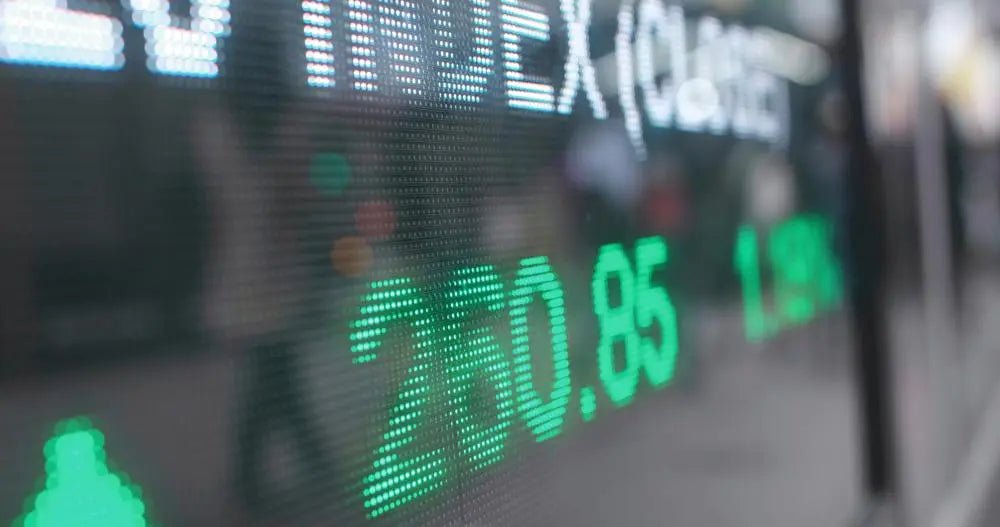Stock prices are always moving. Sometimes the swings are small and gradual, other times sudden and dramatic. For investors, understanding what drives these movements is critical — not only to spot opportunities but also to manage risk.
This article breaks down the most important forces shaping stock prices today, from economic data and company performance to political headlines and investor psychology.
How Stock Prices Are Set
At its core, the stock market runs on supply and demand. If more investors want to buy a stock than sell it, the price goes up. If more want to sell than buy, the price goes down. That simple equation is influenced by many overlapping factors, which change daily.
Key Drivers of Stock Prices
Economic Indicators
Economic reports act like report cards on the broader economy. Investors watch them closely because they influence expectations for growth, inflation, and interest rates.
- GDP growth: Strong growth usually lifts stock prices by signaling rising corporate profits. Weak growth does the opposite.
- Inflation: Moderate inflation often supports stocks, but high inflation reduces purchasing power and raises borrowing costs, hurting corporate earnings.
- Unemployment rates: Falling unemployment suggests healthy demand and stronger profits, while rising unemployment can signal trouble.
- Consumer spending: Since consumers drive a majority of U.S. GDP, retail sales figures can move stock markets quickly.
Company Financials
Ultimately, investors buy shares of companies, not economies. That makes corporate earnings reports one of the strongest direct influences on stock prices.
Key metrics include:
- Revenue growth: Expanding sales often lead to higher valuations.
- Earnings per share (EPS): The bottom-line profit, divided by shares outstanding, is closely tracked by analysts.
- Debt levels: High leverage makes companies vulnerable in rising rate environments.
- Guidance: Management forecasts can move prices as much as actual earnings results.
Example: A company might report strong earnings but see its stock fall if executives warn of weaker sales ahead.
Geopolitical Events
Markets dislike uncertainty. Political shocks can shake investor confidence even if they don’t directly change a company’s business.
Events that typically influence stock prices include:
- Elections or leadership changes
- Wars and conflicts
- Trade disputes and tariffs
- Natural disasters disrupting supply chains
For instance, global stocks often react immediately to trade negotiations between the U.S. and China, even before any policies are finalized.
Investor Sentiment
Markets aren’t purely rational. Fear and greed play large roles in pricing. When optimism is high, stock prices can run well above fundamental values. When pessimism sets in, prices can fall faster than company results justify.
Sentiment is shaped by:
- News headlines
- Market trends (bull or bear markets)
- Surveys and sentiment indices
- Social media chatter and crowd psychology
Example: Meme stocks like GameStop or AMC showed how quickly collective sentiment can overpower fundamentals — at least in the short term.
Interest Rates
Interest rates set by the Federal Reserve ripple through the economy and stock market.
- Lower rates reduce borrowing costs for companies and consumers, often lifting stock prices.
- Higher rates make borrowing more expensive and make bonds more attractive relative to stocks, often putting downward pressure on equities.
Rate decisions are among the most closely watched events for Wall Street.
The Role of Financial Institutions
Large banks and investment firms shape markets in two major ways:
- Research reports and analyst ratings: A buy or sell recommendation from a major firm can sway investor demand.
- Market-making: Institutions often act as intermediaries, ensuring liquidity in trades. Their activity can amplify price moves during volatile periods.
While Bank of America, JPMorgan, and others don’t set stock prices, their influence on investor behavior is significant.
Example: A Stock Under Pressure
Imagine a technology company announces strong quarterly earnings but warns about rising costs due to higher interest rates and global supply chain issues.
- Investors initially cheer the earnings beat, pushing the stock up.
- The caution about future margins quickly changes sentiment, and the stock falls by 8% the next day.
- A week later, a new Federal Reserve policy statement lowers rate expectations, easing pressure, and the stock rebounds.
This chain reaction shows how multiple factors — earnings, interest rates, and sentiment — interact in real time.
Risks of Focusing on Only One Factor
Some investors anchor too heavily on a single piece of information, such as one economic report or one analyst rating. Stock prices, however, are rarely shaped by just one force. The best approach is to track several categories at once: company fundamentals, broader economic conditions, and market psychology.
FAQs
Why do stocks sometimes rise even with bad news?
Investors often trade on expectations. If bad news is already priced in, or if results are “less bad” than feared, stocks may rise despite negative headlines.
Do rising interest rates always hurt stocks?
Not always. If rate hikes reflect strong economic growth, corporate profits may rise enough to offset higher borrowing costs.
How much influence do big banks really have?
Banks don’t set prices directly, but their research, trading, and market-making activities can sway investor sentiment and liquidity, especially in the short term.
What’s the biggest factor moving stocks in 2025?
So far, inflation trends and Federal Reserve policy have been the strongest forces, but geopolitical events remain unpredictable wild cards.
In Closing
Stock prices today are influenced by a web of factors — from hard economic data to the softer psychology of investor sentiment. While no single person can predict prices with certainty, understanding the key drivers helps investors react calmly and position themselves wisely.
Staying informed, focusing on fundamentals, and avoiding emotional trading remain the best ways to navigate today’s ever-changing markets.







